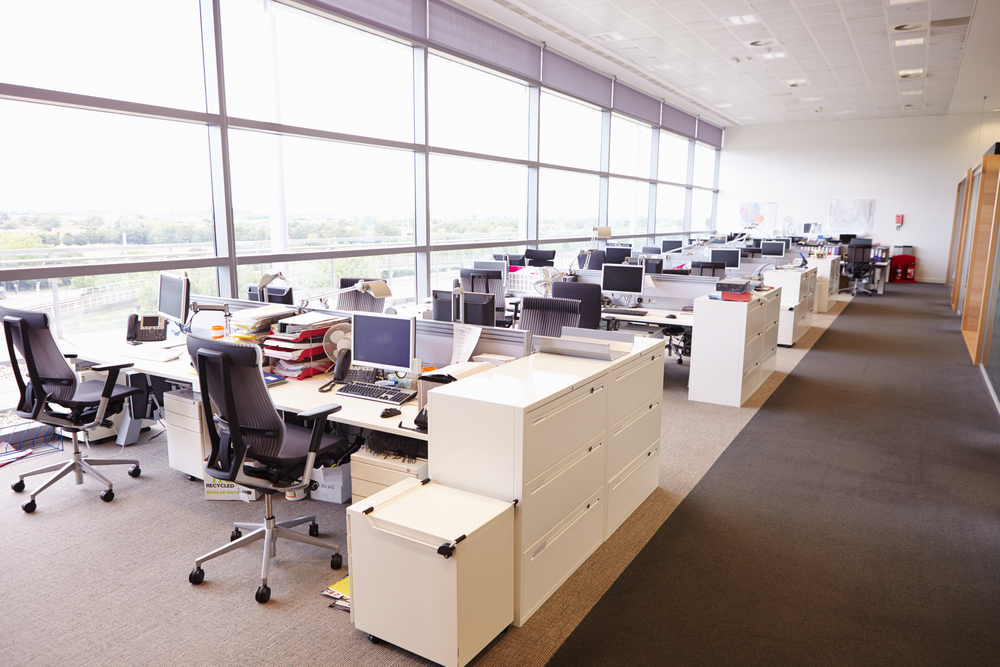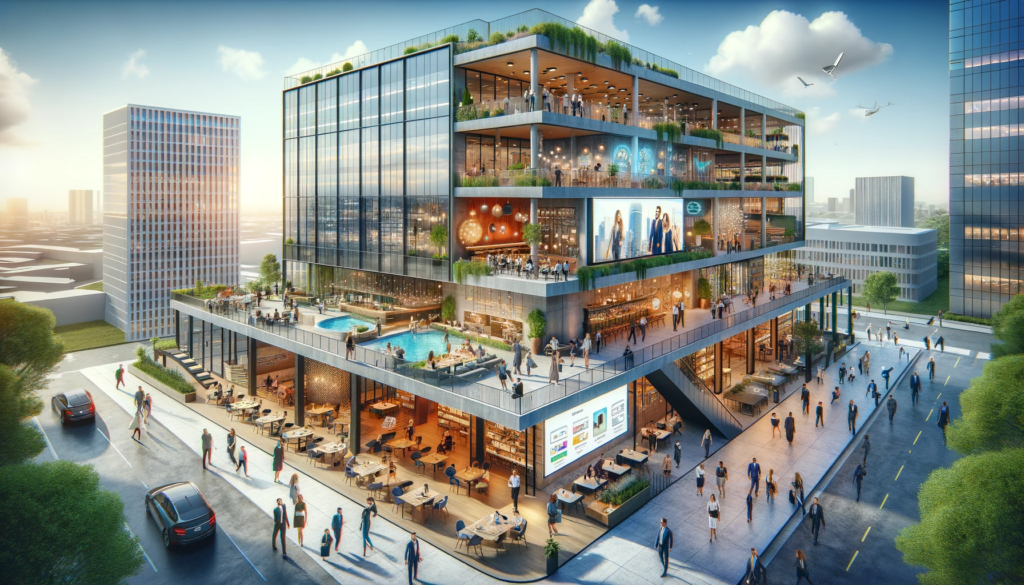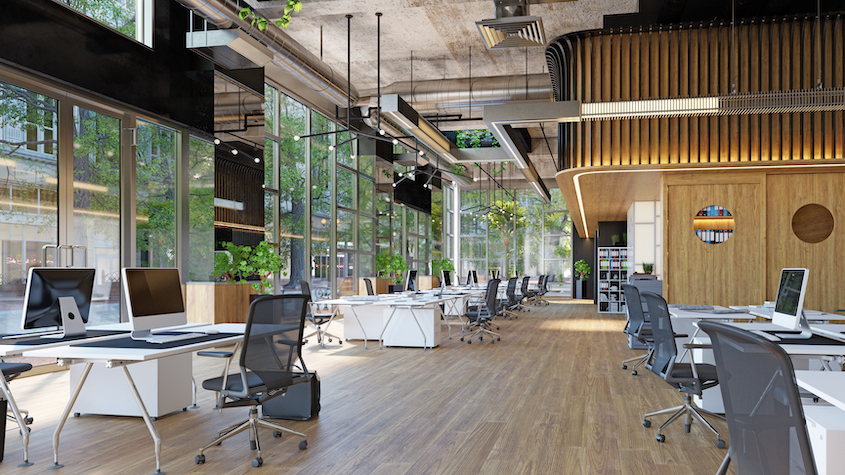Adapting to A Revolutionary Shift in Office Use & Human Behavior
How the Office in America Changed Overnight
In 2020, the COVID-19 pandemic revolutionized office space demand, significantly impacting commercial real estate as we all adapt to hybrid working and the realization that the new normal means fewer in-person work days per week.
With the rise of remote work, flexible models, and online collaboration tools, the traditional five days a week, “9 to 5” office structure has been replaced by two to three days with very few people in the office full time. Zoom meetings are the norm; remote work is now integrated with in-office work. Therefore the demand for office space has plummeted. A company of fifty people can easily take one third less space. This evolution has had a profound impact on the commercial real estate industry and office building operators, with a massive drop in demand, requiring stakeholders to adapt to these changing trends and scramble to reimagine the future of office spaces, challenging the traditional office space concept.
What Will Happen to Those Empty Buildings? – Even More Dramatic Changes Coming
The top analysts in the commercial real estate market see some inevitable dramatic changes coming that will impact all aspects of the office market and downtowns with the amazing fact that there will most likely be a shortage of class-A office space in the future, according to Eric Rosenbaum of CNBC:
- Up to one-third of office real estate could be wiped out, according to apocalyptic predictions about the emptying of downtowns and the end of much white-collar work in towers.
- But the top-tier commercial buildings will face a shortage in the years ahead, with construction of elite Class A properties headed for a new low.
- Older trophy buildings are being sold at discounts, and some landlords facing debt refinancing at higher interest rates will struggle. Still, lease action in the premier property market is already higher this year than in the 2015-2019 pre-Covid period, according to CoStar Group.

Reinventing Office Spaces: Embracing Innovation & Flexibility
Property owners and investors are now faced with the challenge of reinventing their properties to meet the evolving needs of tenants. This includes creating a unique brand identity that speaks to the desires of modern workers, who are no longer limited by geographical boundaries.
Taking cues from the hospitality and entertainment industries, office buildings must be transformed into dynamic spaces that promote collaboration, creativity, and flexibility. This means incorporating amenities such as co-working spaces, food and drink amenities, and community events. By creating an engaging environment, businesses can attract and retain top talent while also increasing the value of their properties.
Adaptation and Change – The Impact on Commercial Real Estate
No one needs as much space for the same workforce. The changes in square footage demand have profoundly impacted the commercial real estate model as it’s been operating for virtually 100 years. Vacancy rates in traditional office spaces have risen, leading to a reevaluation of property values. Property owners are in many cases not able to pay their mortgages and fill their buildings. Many businesses have downsized their office footprints or opted for flexible, co-working space options to accommodate their evolving needs.
Now it’s time to rethink what “going to the office” means, not just for the workers but for building owners and investors. More innovative property owners are challenging the traditional office space concept and repurposing spaces for new flexible uses.
Repurposing, Redevelopment, and Mixed Use Will Change Downtowns Over Time
One trend emerging in response to shifting office demands is the repurposing and redevelopment of commercial spaces. Some property owners of older Class A and B buildings are exploring creative solutions, such as converting office buildings into mixed-use developments incorporating residential, retail, and recreational spaces.
This adaptive reuse allows for the optimization of underutilized properties in response to changing market dynamics. Lower Manhattan has amazing examples of this even in more contemporary buildings built in the 1990’s. The one thing mixed use does is bring in people and create more opportunities for other retail uses to grow and flourish. However, this will be a slow and often painful change over time due to permitting costs related to renovation.
The Future of Office Spaces and Commercial Real Estate
While the full extent of the long-term impact remains uncertain, the future of office spaces and commercial real estate will be shaped by a combination of remote work trends, flexible work arrangements, and advancements in technology. Commercial property developers and owners must remain agile, responsive to market needs, and open to innovative solutions.
The emphasis on creating collaborative, flexible, and technologically integrated work environments is likely to persist. However, the physical office space may transform into a hub for collaboration, team building, and social interaction, rather than a daily workspace for all employees. This shift could lead to a more intentional and strategic use of office spaces with a focus on fostering company culture and employee well-being.
Where do we go from here? – Rebranding and Marketing with Hospitality, Flexibility, And Innovation in Mind
This revolution – in the way businesses view and utilize office spaces – is an opportunity to revamp how buildings are used and to market these properties to the new expectations of tenants and workers.
Here are some key marketing recommendations that will position properties, attract tenants, and acknowledge the new way people want to work in marketing these new spaces:
- Rethink and redesign office building floor plate designs to be more flexible and open to meet the needs of a broad range of tenant sizes and mixes.
- Add attractive hospitality and community amenities that give the building a sense of exclusivity for tenants, such as rooftop bars, restaurants, meeting spaces, and wellness centers.
- Rebrand and position the buildings as unique locations with unique features that showcase how the building has adapted to the new work environment to tenants more flexibility.
- Build websites and landing pages supporting a carefully curated digital marketing campaign that targets both tenant brokers and tenants and consistently features the building location and amenities as unique and different, more like a hotel.

Major owners of office buildings throughout traditional downtown work centers from New York to Chicago to San Francisco must fast the fact that they cannot just place refurbished space on the market or convert it to workshare space. It’s time to reinvent and market these assets.
As the market continues to evolve, stakeholders in the real estate industry must adapt to these changes, embracing innovative solutions and reimagining the future of office spaces to meet the evolving needs of the workforce. They must plan marketing efforts to position properties for what makes them unique and target the right audience with online marketing tools, websites, and videos to get the attention needed to fill their buildings.
